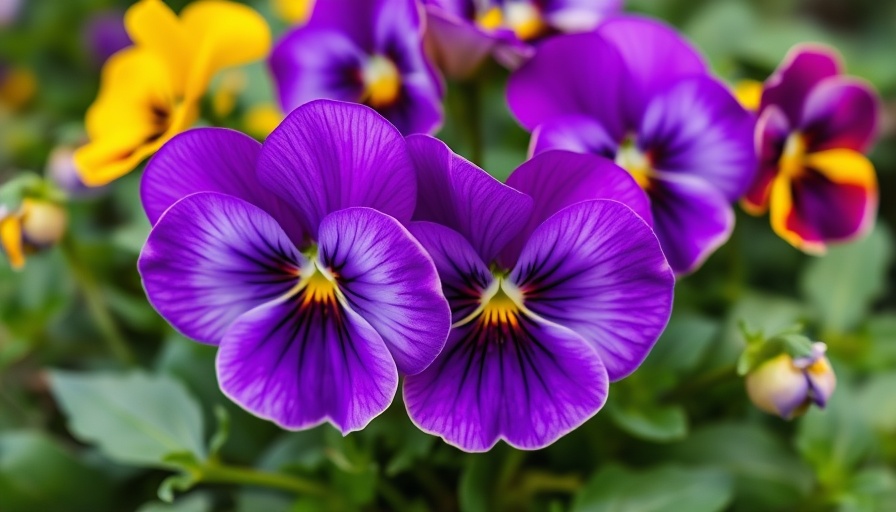
Pansies: The Colorful Champions of Early Spring
Pansies are not only one of the first flowers to bloom after winter, but they also bring a vibrant splash of color during the bleak months of late fall and early spring. This sweet and cheerful flower, known scientifically as Viola × wittrockiana, has long been a favorite among gardeners for good reason. With centuries of cultivation leading to a myriad selection of colors and patterns, choosing the right pansy for your garden can have you overwhelmed yet thrilled at the same time.
Dive into the Diversity: Top 19 Pansy Varieties for Your Garden
For those new to gardening or seasoned green thumbs, selecting the right variety of pansies can make a huge difference in your garden's aesthetic appeal. Below are 19 of the best pansy varieties to consider:
- Blue Skies
- Frizzle Sizzle Mix
- Frost
- Moulin Rouge
- Neon Violet
- Ocean Breeze Mix
- Orange Sun
- Pastel Mix
- Pure Golden Yellow
- Raspberry Swirl
- Rhinegold
- Ruby Mix
- Silverbride
- Sunrise
- Swiss Giants Mix
- True Blue
- Ullswater
- Viva La Violet
- Yellow Blotch
Simple Tips for Healthier Pansies
Growing healthy pansies goes beyond just choosing the right variety. Understanding plant care and conditions is essential for bringing forth their vibrant blooms. Pansies thrive best in cooler temperatures and well-drained, nutrient-rich soil. Regular watering and deadheading spent flowers can significantly extend your plants' blooming period.
Consider using organic gardening practices such as composting to enrich your soil while minimizing the use of synthetic fertilizers. This is not only better for the environment but also promotes the health of beneficial garden insects that contribute to your plants' growth.
Landscape Design: Integrating Pansies into Your Home
Pansies are incredibly versatile and can be employed in various garden designs, from stunning flower beds to decorative pathways. One effective landscaping idea is to create a bold border around your garden using contrasting colors of pansies. Using this flower at different levels of your garden can add depth and dimension. Moreover, consider planting pansies in raised garden beds or containers for patios or balconies, reflecting both beauty and practicality in your outdoor spots.
Future Trends: Embracing Sustainability in Gardening
As climate awareness grows, more gardeners are turning to sustainable practices, especially when it comes to flower gardening. Pansies fit nicely into this trend as they are hardy and can endure unexpected frosts, which is particularly important with shifting weather patterns. Using companion planting techniques alongside your pansies can promote a healthy garden ecosystem, deterring pests naturally, which is especially crucial for organic gardening enthusiasts.
Take Action: Cultivate Your Pansy Garden Today
With spring on the horizon, now is the perfect time to begin your pansy journey. Whether you opt for seeds or established plants, the rewards of nurturing these resilient flowers are well worth the effort. Start your gardening projects early and consider how you can incorporate other sustainable practices into your routine.
The joy that comes from seeing your garden blossom with color will not only enhance your outdoor space but will also promote mental well-being—encouraging relaxation and peace as you observe the beauty around you.
 Add Row
Add Row  Add
Add 




Write A Comment